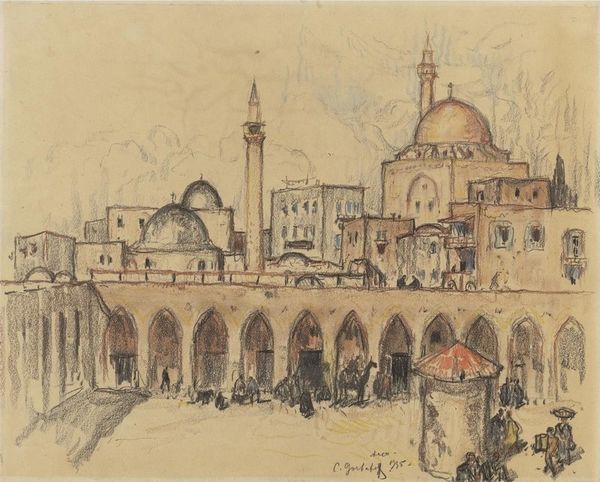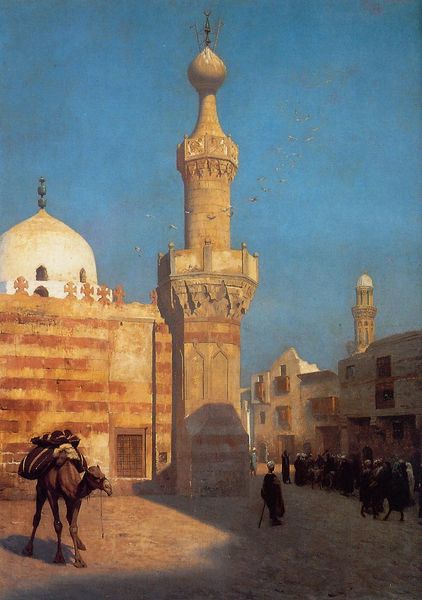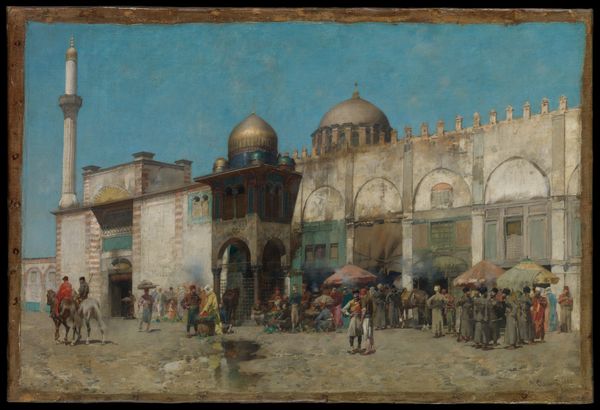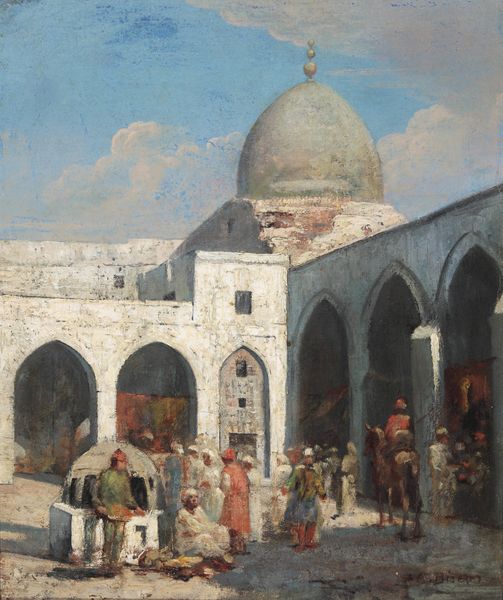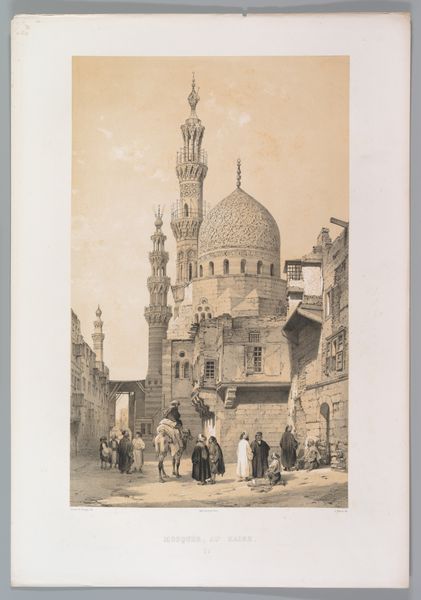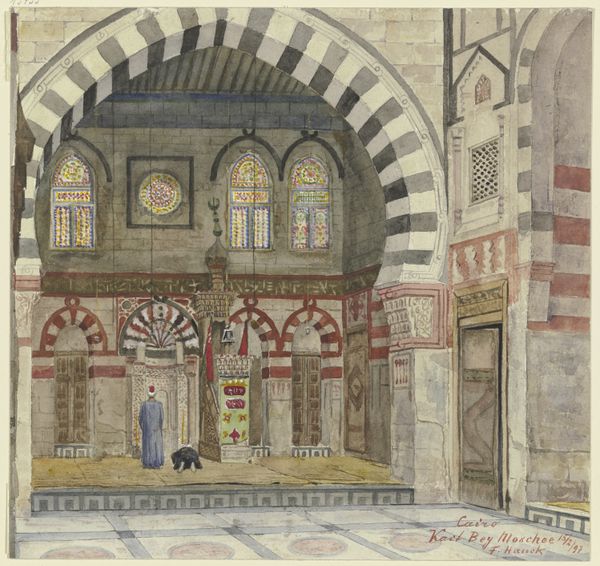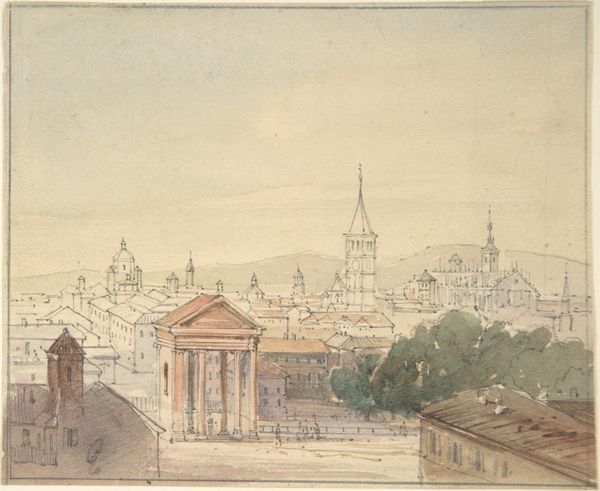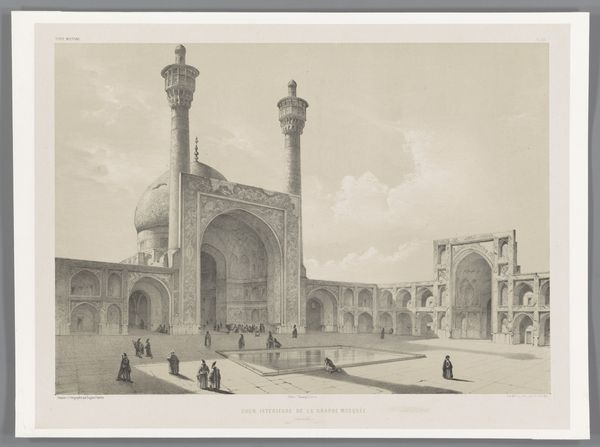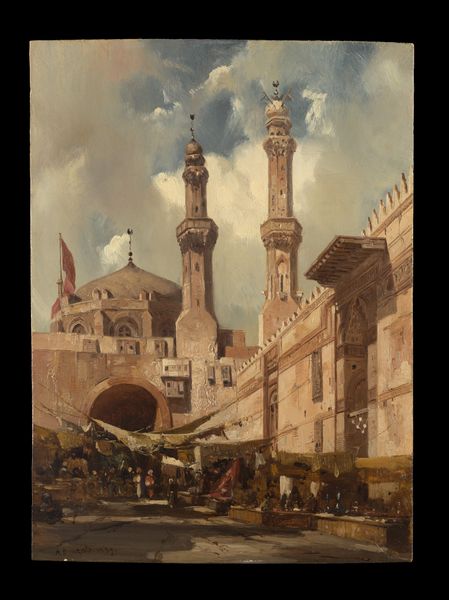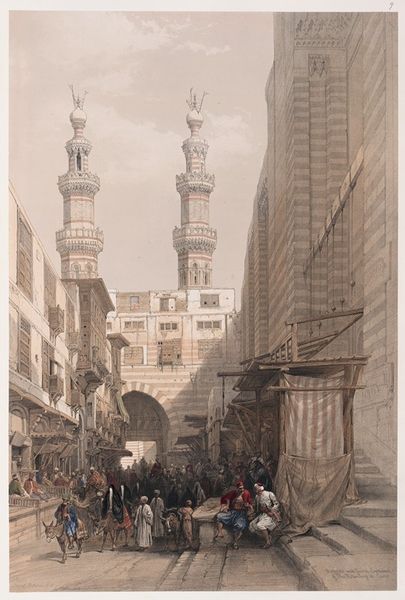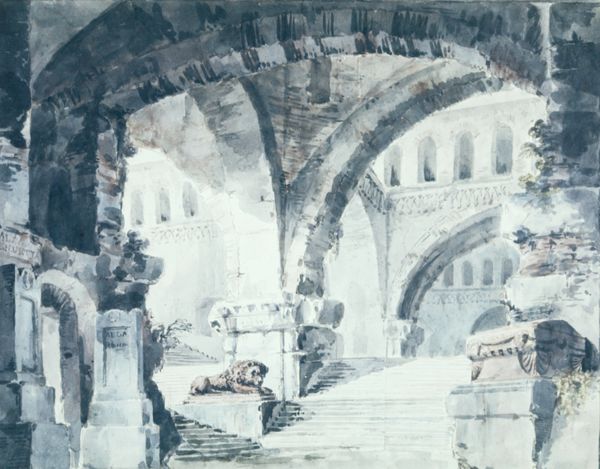
The Square in Front of Bab-i-Hümayan in Constantinople 1836
0:00
0:00
drawing, watercolor
#
drawing
#
watercolor
#
orientalism
#
cityscape
#
realism
Dimensions: 215 mm (height) x 288 mm (width) (bladmaal)
Curator: This is Martinus Rørbye’s 1836 watercolor and drawing titled "The Square in Front of Bab-i-Hümayan in Constantinople", currently held at the SMK. Editor: It's immediately striking how open and sun-drenched this composition is. The tones are soft, almost pastel, giving the city square a feeling of tranquil ordinariness. Curator: Rørbye, situated within the broader context of Orientalism, positions himself as an observer. How does his Northern European, Danish perspective influence our understanding of Ottoman culture depicted here? Does it reinforce or challenge any prevailing power dynamics of the time? Editor: That's crucial to consider. And from a material perspective, using watercolor and drawing, he is making a relatively inexpensive artwork, probably en plein air and designed to travel easily. There's a subtle economy and speed of production that mirrors the efficiency of travel during the period. This method stands in contrast to oil paintings intended for static exhibition. Curator: I appreciate that connection to materiality and speed. Think about how his depiction freezes a specific moment within the constant movement of a globalizing world. The work speaks to trade routes, to colonial ambitions, to the rise of mass production that allowed this easy transit of artists. How might the locals have understood his practice of observing and capturing their likenesses, their buildings, their routines? Editor: And what's so fascinating is the contrast between the softness of the rendering, especially of the distant structures, and the sharp detail of elements closer to us – the ironwork of the gate, the individuals in the square. Curator: That distinction invites contemplation on the ways in which Western artists construct their realities and prioritize subjects through composition, particularly those on the so-called periphery of the European world. This piece is now viewed in Denmark—how does its current location and institutional context shape its meaning today? Editor: Ultimately, what grabs my attention is the tension created between what's being shown and how that visual information traveled through materials and across contexts. It speaks of encounters, artistic skill, and societal consumption of the unfamiliar through commodification and orientalizing gazes. Curator: I agree, viewing it through the layers of history makes us appreciate its complexity. Editor: Absolutely, understanding the artist's labor brings another angle of inquiry to what Rørbye attempted to record.
Comments
No comments
Be the first to comment and join the conversation on the ultimate creative platform.
